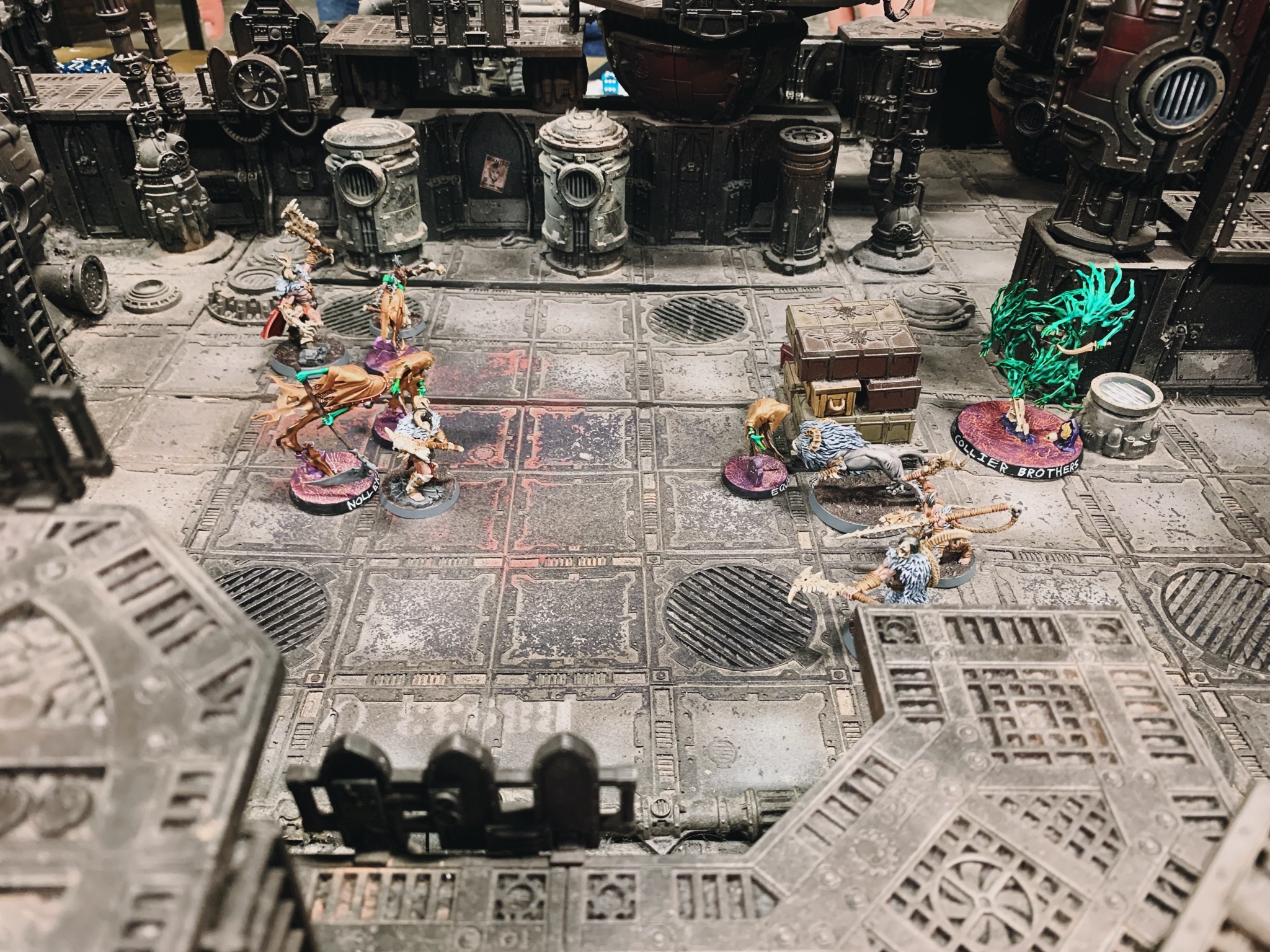Review: Warcry
by Ramanan Sivaranjan on March 26, 2020
Tagged: warhammer wargame warcry minis 28mm

In 2019 a lot of people were expecting (hoping?) Games Workshop would release a skirmish game in the vein of Mordheim, to celebrate its 20th anniversary. Instead, Games Workshop announced Warcry, and I don’t think people were too upset because it was looking pretty hot. Warcry feels like a throw back to the old Realms of Chaos books: it’s a game about Chaos cultists killing each other. Warcry will look familiar to people who have been paying attention to what Games Workshop has been doing recently, but I think this might be their best game yet. (Maybe that’s a low bar, because a lot of their games aren’t actually very good? Ha!)
Becca Scott can teach you how to play in 9 minutes. You can go and watch that video now, I can wait.
Warcry feels like it strips away everything I find aggravating about traditional Warhammer games. So, if you also dislike the things I find annoying about Warhammer 40K or Kill Team this might be the game for you! Let’s dig in.
Warcry is a skirmish game. This means its model count is low. Fantastic. The number of units each faction can field is also quite small. Each unit is described by a card, and that is the end of that story. There are no data sheets with a bunch of options and upgrades and all that nonsense. A unit has some stats and one or two weapons. This makes list building pretty simple. You might have 6-10 different units available, and you would mix and match to units to end up with 3-15 models, with one leader, all costing under 1000 points.
The starter set comes with 4 decks of cards that are meant to help you kick off a game. For those of you who have used the Open War cards for Warhammer 40K, it’s very much in the same vein. A terrain card tells you how to set up the board, a deployment card tells you how to deploy troops, a victory card tells you how you will win the game, and a twist card adds a special rule to the battle. Deployment in Warcry is a bit unusual. Each deployment card has 3 symbols: a Dagger, Shield, and Hammer. You must split your models up into three groups that correspond to these symbols. You might have games where you and your opponent’s Dagger units start the game right next to each other. In other games you might be on the opposite sides of the board. Some deployment cards will indicate you deploy your troops in subsequent rounds. Your Hammer may show up in the 3rd round, turning the tide of the battle. This makes for interesting and unique games.1
The game play itself is also simpler. You move your movement score in inches, any which way you like. If you want to climb a wall go nuts. If you want to jump a gap, just jump. The game feels very dynamic. Attacking is also much more straightforward. You roll a number of d6s depending on your weapon, try to beat a target score based on your weapon’s strength and the target’s toughness (which should be familiar to any warhammer player), and finally if you score hits you do a fixed amount of damage. (If you scored a 6 that’s roll is a critical hit and do more damage.) That’s the end of that story. There is no rolling to wound, no rolling for armour saves, etc, etc. They’ve basically moved all of that dice rolling into the damage and hit point scores of the various units.
Perhaps the last notable thing about Warcry is its abilities system. You start a round by rolling 6 dice for initiative. You set aside doubles, tripples and quads. The number of singles you have is your initiative, the higher number goes first. The other dice you’ve set aside can be used during the round to use special abilities each faction posesses. These are listed on a small card. There aren’t pages and pages of strategems to worry about. Some abilities can only be used by particular units. Maybe that’s the most complicated thing about them. Abilities help differentiate the various armies, and introduce some more twists into the game, without adding a lot of complexity.
I haven’t gotten to play Warcry much: just one game with Patrick while I was in the UK. One day, when this pandemic is over, I hope to play it again. Maybe run its weird-ass campaign strucuture—a topic for another blog post.
-
For those of you who care about ‘balance’, there are a subset of the cards that are meant to create more symmetrical situations. ↩
